Reliable cost-efficient distributed energy systems with a high renewable penetration: a techno-economic case study for remote off-grid regional coal seam gas extraction
Joachim Bamberger A F , Ti-Chiun Chang B , Brian Mason C , Amer Mesanovic D , Ulrich Münz B , Warner Priest C , Ross Thompson E , Andrei Szabo D and Xiaofan Wu BA Siemens AG, Freyeslebenstr. 1, 91058 Erlangen, Germany.
B Siemens Corp, 755 College Road East, Princeton, NJ 08540, USA.
C Siemens Ltd, 160 Herring Road Macquarie Park, NSW 2113, Australia.
D Siemens AG, Otto-Hahn-Ring 6, 81739 Munich, Germany.
E Siemens Ltd, 153 Campbell Street, Bowen Hills, Qld 4006, Australia.
F Corresponding author. Email: joachim.bamberger@siemens.com
The APPEA Journal 58(2) 493-500 https://doi.org/10.1071/AJ17238
Accepted: 1 March 2018 Published: 28 May 2018
Abstract
As our energy systems evolve with the adoption of more variable renewable energy resources, so will our oil and gas industry play a pivotal role in what is expected to be a lengthy transitional phase to a greater mix of renewables with a reliance on fast, reliable gas peaking power generation, which have lower greenhouse gas emissions, and short delivery periods to construct. Oil and gas companies are also rapidly moving towards becoming integrated energy companies supplying a mix of gas, oil, photovoltaic power, wind power and hydrogen, coupling these into the electrical and gas grids.
We discuss some of the components and tasks of a distributed energy system in its various system guises that contribute to a more cost effective, reliable and resilient energy system with lower greenhouse gas emissions. We discuss the role that hydrogen will play in the future as oil and gas companies explore alternatives to fossil fuels to address their need to reduce their carbon footprint, substituting or supplementing their conventional gas supply with renewably produced hydrogen.
We talk about how Australia with its excellent renewable resources and the opportunity to potentially develop a new industry around the production of renewable fuels, power-to-X, such as hydrogen, with the potential for the oil and gas industry to leverage its existing assets (i.e. gas pipelines) and future embedded renewable assets to produce hydrogen through electrolysis with the intention of supplementing their liquefied natural gas exports with a portion of renewably produced hydrogen.
Keywords: ammonia, electrolysis, gas injection, hybrid power, hybrid power plants, hydrogen, microgrid, off-grid power, power-to-X, renewable integration, short-term PV forecasting.
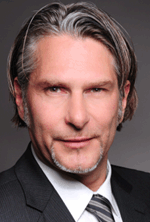
Joachim Bamberger is Head of Innovation at Siemens AG, Distributed Energy Systems. Joachim has a long track record in innovation projects in the areas of modelling and control in automotive, industry, communication and distributed energy applications. For 10 years now he has driven innovation from research, product and innovation management positions in the area of integrating renewables into energy systems. The focus of his work is in development of methods, software and systems to improve and simplify design, monitor, control and analysis of complex and hybrid energy systems. As innovation manager he conducts research and development projects within Siemens or with external partners and supports implementation in projects, products or tools. Joachim is based in Germany and holds a Diploma degree in Electrical Engineering and Information Technology from the Technical University of Munich, Germany. |
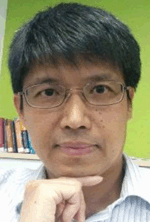
Dr Ti-chiun Chang is a Scientist at Siemens Corporation, Corporate Technology. Ti-chiun received his PhD in Electrical and Computer Engineering from Purdue University in 2004. He has worked on a variety of industrial R and D projects in the area of signal/image processing, computer vision, and machine learning. He holds 20 US patents and published over 17 research papers. His work on image reconstruction, de-noising and enhancement was deployed in several commercial medical-imaging modalities. His current research endeavour involves structured learning that seamlessly integrates prior models and data driven approaches. The example applications in computer vision are multi-source fusion and distributed inference, and physical quantity regression and qualitative description from images. |

Brian Mason is a Business Development Manager in Dresser-Rand, a Siemens Business for the oil and gas market, based in Australia. He has spent 25 years in the oil and gas industry working in Canada and Australia in various roles from field service, engineering and sales focusing on rotating machinery. He holds a Bachelor of Technology degree from the University of Southern Queensland in Mechanical Engineering. |

Amer Mesanovic is a research scientist at Siemens Corporate Technology in Munich. He gained his Master’s degree from the Technical University of Munich and is currently pursuing a PhD degree at the Laboratory for Systems Theory and Automatic Control, Otto von Guericke University Magdeburg, Germany. His research interests include analysis and controller design for power systems ranging from microgrids to large-scale systems. |
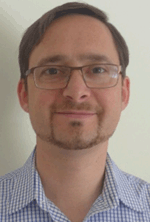
Dr Ulrich Münz leads the Research Group Autonomous Systems and Control at Siemens Corporate Technology in Princeton, NJ, USA. Prior to this appointment, he was a senior key expert research scientist for power system stability and control at Siemens Corporate Technology in Munich, Germany. Ulrich Münz received his PhD degree in Automatic Control from the University of Stuttgart, Germany in 2010, and MSc degrees in Electrical Engineering and Telecommunications from the Universities of Stuttgart, Germany, and Madrid, Spain, both in 2005. He received the EECI European PhD Award on Embedded and Networked Control in 2010. From 2010 to 2011, he was a systems engineer at Robert Bosch GmbH. His main research interests include stability and control of power systems with high renewable integration. |
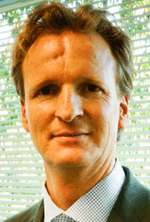
Warner Priest is the Business Development Manager for Emerging Technologies in the Energy Management Division within Siemens Australia. He is a member of the Australian CIGRE AP B5 committee and the Australian Protection Symposium committee. Warner’s field of expertise stem from ~24 years of experience in the power transmission and distribution environment, with a particular focus on making our grids smarter. He has a global view of energy applications for utilities, oil and gas, industry, metals and mining, renewable energy, microgrids, renewable hydrogen production and large-scale energy storage, with extensive experience in the field of power systems ranging from 400 V up to and including 400 kV. |
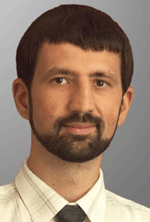
Ross Thompson is a member of Siemens Pacific’s Executive Leadership team and, in addition to having Regional General Manager duties across all Divisions for Siemens in Australia, Ross is also Head of Siemens recently established Distributed Energy Systems business across the Pacific. Ross is a Trustee for the Committee for Economic Development of Australia, in addition to being a member of various Industry and Commerce Organisations and Groups such as the Australia Papua New Guinea Chamber of Commerce, and Australia Germany Chamber of Commerce to name a few. Ross also mentors start-ups and entrepreneurs in his free time through the Queensland Government’s Mentoring for growth initiative, and holds degrees in International Business and Strategy (MBA). |
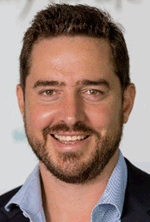
Dr Andrei Szabo is a research scientist at Siemens Corporate Technology in Munich, Germany. Andrei receiver his PhD degree in Communication Systems and Signal Processing from the Technical University of Munich, Germany in 2007 and his MSc degree in Electrical Engineering and Telecommunications from the University ‘Politehnica’ Bucharest, Romania in 2000. His main research interests include the operation of grids and hybrid power plants with high penetration of renewable generation, their state estimation, forecast and predictive control. |
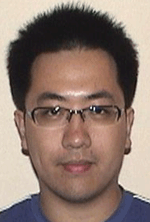
Dr Xiaofan Wu is a research scientist at Siemens Corporate Technology located in Princeton, NJ, USA. He received the MSc and PhD degrees from the Department of Electrical and Computer Engineering at the University of Minnesota in 2016. He has many years of experience in advanced control and optimisation methods for large-scale power systems. |
References
Chang, T., Ernst, J., Wiles, J., Bamberger, J., and Szabo, A. (2017). Short term cloud forecast with improved cloud recognition and prediction and uncertainty index estimation: US and World patent pending.Mesanović, A., Münz, U., and Findeisen, R. (2017). Coordinated tuning of synchronous generator controllers for power oscillation damping In ‘2017 IEEE PES Innovative Smart Grid Technologies Conference Europe (ISGT-Europe: Torino.)
Metzger, M., Koeberle, R., Mayr, K., Buchstaller, D., Armstorfer, A., Sowa, T., and Biechl, H. (2015). IREN2: Zukunftsfähige Netze zur Integration Regenerativer Energiesysteme. In ‘Proceedings of the Von Smart Grids zu Smart Markets Conference, Kassel, Germany’. VDE VERLAG GMBH, Berlin and Offenbach.
Philibert, C. (2017). ‘Renewable Energy for Industry.’ (OECD/IEA: Paris.)
Sun, S., Ernst, J., Sapkota, A., Ritzhaupt-Kleissl, E., Wiles, J., Bamberger, J., and Chen, T. (2014). Short term cloud coverage prediction using ground based all sky imager In ‘2014 International Conference on Smart Grid Communications, Venice, Italy (SmartGridComm)’. IEEE.


